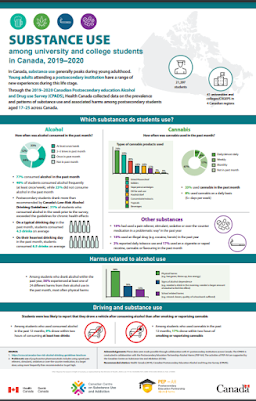The new limits on the amount of nicotine that is permitted in vaping liquids will protect many young people from addiction. This measure will be in place in a matter of weeks and urgently required. Vaping products are highly addictive: for every eight young Canadians who vape even once, one has become a daily user. Capping nicotine concentration at 20 mg/ml will align Canada's health regulations with those in the European Union and other countries whose experience of youth vaping has been less severe than countries, like Canada and the United States, where higher levels have been allowed.
The proposed restrictions on flavours in vaping products are also urgently needed. Attractive flavourings entice young people to experiment with vaping and they increase the risk of addiction by encouraging them to continue vaping as they try out new flavours. Flavours mask the harshness of inhaling nicotine and make it easier to bring the particulates and other harmful chemicals deep into the lungs where they cause more damage. These pleasant flavours are associated with healthful products and discourage young people from understanding how harmful these products can be.
We very concerned at the misguided decision to exempt mint and menthol flavours from the proposed flavour restriction and see no reason for the government to have yielded to the pressure tactics of the tobacco and vaping industry. We know from previous experience with restricting flavourings in in tobacco products that the menthol-mint exemption significantly undermines the health benefits of the proposal as mint and menthol are favourite flavours of young people. Moreover, the evidence to support banning menthol is greater than for some other flavours, if only because menthol flavouring has been used for much longer and its health impact has been studied in more depth. This partial ban also exposes Canada to challenges at international trade tribunals, as the United States found when its 2009 exemption for menthol was successfully challenged at the World Trade Organization.
As welcome as today's announcements are, the new regulations are only band-aid solutions. They do not address the underlying problems of the tobacco market or the structural weaknesses of the federal law. The 2018 Tobacco and Vaping Products Act has proven inadequate both at protecting young people and at reducing harm to smokers. This law was based on the dangerous and incorrect assumption that harm reduction could be achieved by giving nicotine companies more marketing power in a liberalized commercial vaping market instead of requiring them to end the sale of their most harmful products.
After decades of too-little-too-late regulation-making, it is time for a new approach to smoking and nicotine addiction. When Parliament returns next fall, legislators should give priority attention to the smoking epidemic and the 50,700 preventable deaths it causes each year. They should demand that the government oblige tobacco manufacturers to phase out the sale of combustible tobacco products and end their recruitment of new nicotine addicts.










